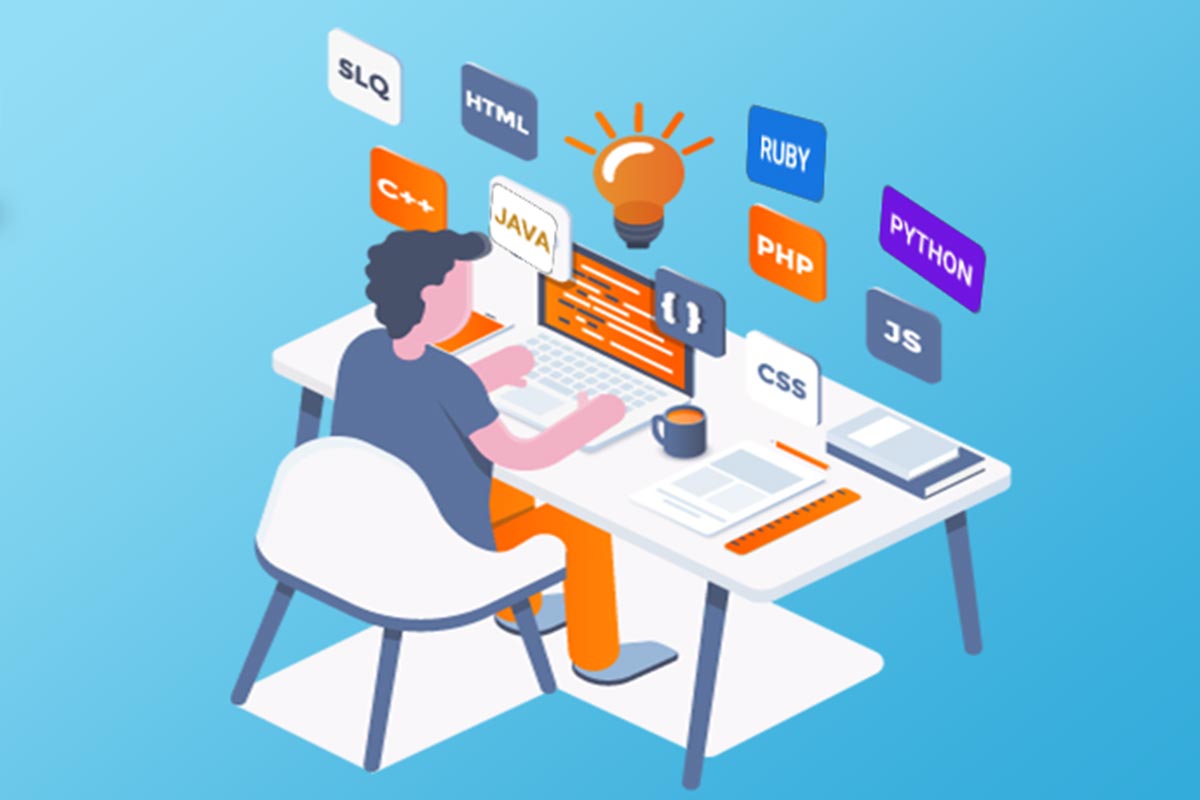When it comes to website development, there are several programming languages to choose from. The choice of the programming language depends on the type of website you want to build, your technical knowledge, and your personal preferences. In this article, we will discuss some of the most popular programming languages used for website development and their advantages and disadvantages.
1. HTML/CSS:
HTML (HyperText Markup Language) and CSS (Cascading Style Sheets) are the most basic languages used in website development. HTML is used to create the structure of a web page while CSS is used to style it. HTML is used to add content, images, and videos to a website, while CSS is used to style the content and make it look attractive.
One of the biggest advantages of HTML/CSS is that they are easy to learn and understand. HTML is a markup language, which means it is designed to be easy to read and write. CSS is also easy to learn and understand, and it allows you to create visually appealing websites.
However, the downside of HTML/CSS is that they are not powerful enough to create complex web applications. They are mainly used to create static websites that do not require much functionality.
2. JavaScript:
JavaScript is a scripting language that is used to add interactivity to websites. It is used to create dynamic web pages and web applications. JavaScript is often used in combination with HTML and CSS to create modern and interactive websites.
One of the biggest advantages of JavaScript is that it is a client-side language, which means it runs on the user’s computer rather than the server. This means that it can be used to create responsive and interactive web pages without requiring a lot of server-side processing.
Another advantage of JavaScript is that it is a versatile language that can be used for both front-end and back-end development. With the introduction of Node.js, JavaScript can now be used to develop server-side applications as well.
However, the downside of JavaScript is that it can be difficult to learn and understand. It also has some performance issues, especially when used for complex applications.
3. PHP:
PHP (Hypertext Preprocessor) is a server-side programming language that is used to create dynamic web pages and web applications. It is one of the most popular programming languages used in web development.
One of the biggest advantages of PHP is that it is easy to learn and understand. It also has a large community of developers who contribute to its development and offer support to other developers.
Another advantage of PHP is that it is compatible with most operating systems and web servers. This means that it can be used to develop web applications on different platforms.
However, the downside of PHP is that it can be vulnerable to security attacks. It also has some performance issues, especially when used for complex applications.
4. Python:
Python is a high-level programming language that is used for a wide range of applications, including web development. It is known for its simplicity, readability, and ease of use.
One of the biggest advantages of Python is that it is easy to learn and understand. It is also a versatile language that can be used for both front-end and back-end development.
Another advantage of Python is that it has a large community of developers who contribute to its development and offer support to other developers. It also has a large number of libraries and frameworks that can be used for web development.
However, the downside of Python is that it can be slower than other programming languages. It is also not as widely used in web development as other programming languages, such as PHP and JavaScript.
5. Ruby:
Ruby is a dynamic, object-oriented programming language that is used for web development. It is known for its simplicity, readability, and ease of use.
One of the biggest advantages of Ruby is that it has a large number of libraries and frameworks that
can be used for web development. Ruby on Rails, for example, is a popular web development framework that is built on top of Ruby. It allows developers to create web applications quickly and easily.
Another advantage of Ruby is that it has a strong focus on code readability and developer productivity. This makes it an ideal language for developing web applications.
However, the downside of Ruby is that it can be slower than other programming languages, especially when used for complex applications. It is also not as widely used in web development as other programming languages, such as PHP and JavaScript.
Good Read: Scope of Artificial Intelligence & Data Science in India
6. Java:
Java is a popular programming language that is used for a wide range of applications, including web development. It is known for its scalability, security, and cross-platform compatibility.
One of the biggest advantages of Java is that it is a server-side language, which means it runs on the server rather than the client’s computer. This makes it ideal for developing large-scale web applications.
Another advantage of Java is that it has a large community of developers who contribute to its development and offer support to other developers. It also has a large number of libraries and frameworks that can be used for web development.
However, the downside of Java is that it can be difficult to learn and understand. It also has a steep learning curve, which means that it may take some time to become proficient in the language.
7. TypeScript:
TypeScript is a superset of JavaScript that adds optional static typing and other features to the language. It is designed to make it easier to write and maintain large-scale JavaScript applications.
One of the biggest advantages of TypeScript is that it adds static typing to JavaScript, which can help catch errors before they become a problem. It also adds other features to the language, such as classes and interfaces, that can make it easier to write complex applications.
Another advantage of TypeScript is that it is compatible with existing JavaScript code, which means that it can be used to gradually migrate to a more robust codebase.
However, the downside of TypeScript is that it can be difficult to learn and understand, especially for developers who are not familiar with JavaScript.
8. C++.
C++ is one of the oldest languages for website development, with great efficiency without any place for mistakes. Used by tech giants like Google and Twitter, it is the heart of website development and outstanding results.
It is object-oriented and ensures efficiency in development of desktop applications, E-commerce servers and video games. In addition, C++ has great compatibility on hardware devices and ensures a good loading of websites on desktops.
9. Swift.
A blessing for mobile and Apple product lovers, Swift makes up for easy learning for these fields. It is a relatively new language coming into existence in 2014, announced by Apple. It can also be used for website development for its competence to ensure a smooth optimization and flow of information. Moreover, it is a highly profitable language due to its reputation of being associated with iOS and Apple products.
Conclusion:
Choosing the best programming language for website development depends on several factors, including the type of website you want to build, your technical knowledge, and your personal preferences. HTML/CSS, JavaScript, PHP, Python, Ruby, Java, and TypeScript are some of the most popular programming languages used in web development.
Each language has its own advantages and disadvantages, and the choice of the language ultimately depends on the requirements of the project. It is important to choose a language that is well-suited for the task at hand, and to continually learn and adapt as new technologies and programming languages emerge.







Leave a Reply